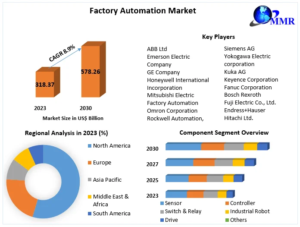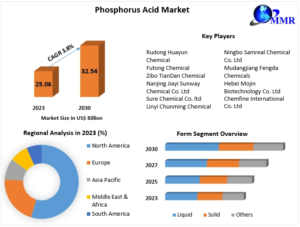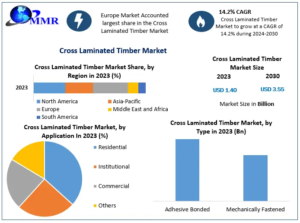
At the heart of every successful business lies a powerful product development strategy. The ability to develop and bring new products to market is essential for sustaining growth, adapting to changing market conditions, and satisfying evolving customer needs.
Great products are more than just innovative. They are backed by a disciplined, strategic process that combines market insights, customer feedback, and technological advancements, enabling them to resonate with consumers. Companies that prioritize excellent product development not only strengthen their competitive edge but also build lasting relationships with customers, ensuring their position as industry leaders.
From initial ideation to market introduction, the process demands both creativity and strategic precision. Several factors, such as innovation, strategic alignment, market research, and cross-functional collaboration, contribute to successful product development. As a reflection of these principles, the career of John LaCorte offers invaluable insights into how effective leadership and strategy can significantly enhance product development outcomes.
- The Significance of Product Development
Product development involves a comprehensive process of bringing a new product to market. It spans multiple phases, including research, design, prototyping, testing, and commercialization. A well-executed product development strategy can open new revenue streams, improve customer loyalty, and enhance a company’s competitive edge.
The global marketplace places a premium on speed, quality, and adaptability, making successful product development essential for survival. Products must not only meet the growing needs of consumers but also anticipate future trends. As such, product development involves constant innovation, requiring organizations to stay nimble and forward-thinking.

- Key Factors for Successful Product Development
Successful product development requires several critical factors working in harmony. These include:
- Customer-Centric Approach: Understanding the needs, pain points, and desires of customers is essential to creating products that resonate with the market. This requires robust market research and customer feedback systems.
- Cross-Functional Collaboration: Effective product development thrives on collaboration across departments—research and development (R&D), marketing, sales, and operations. When these teams work in tandem, organizations can ensure that products are not only innovative but also feasible and market-ready.
- Agile Development: The ability to pivot during the development process is crucial. By embracing an agile mindset, businesses can respond to market changes, adapt to new information, and refine products to meet evolving demands.
- Leadership and Strategic Vision: Strong leadership ensures that the product development process aligns with the broader goals of the organization. Leaders must be able to balance innovation with practicality, focusing on both short-term wins and long-term growth.
- John LaCorte’s Approach to Product Development
LaCorte exemplifies these principles of successful product development through his career as an executive in the lighting industry. With over 30 years of experience in sales leadership, business development, and product innovation, LaCorte’s expertise reflects a deep understanding of what it takes to drive product success in competitive markets.
As the President and CEO of Concept 813, LaCorte has consistently demonstrated his ability to lead teams toward groundbreaking achievements. His previous role as Chief Revenue Officer at VOLT Lighting is particularly illustrative of his impact. During his tenure, LaCorte’s leadership resulted in a 150% year-over-year revenue growth, an impressive accomplishment that speaks to his mastery in product development, market expansion, and sales strategy.
One of the key highlights of LaCorte’s career has been his customer-centric approach. He understood early on that product development needs to be tightly aligned with market demand. His efforts to create a product training center and lighting council at VOLT Lighting were directly aimed at improving customer understanding and engagement. By offering training and resources, LaCorte not only increased brand recognition but also built a solid foundation for customer loyalty, driving a 62% increase in revenues.
- Innovation and Strategic Alliances
Innovation is at the center of successful product development, and LaCorte’s career is marked by a series of forward-thinking initiatives. His experience in sourcing new product lines in international markets showcases his ability to harness global opportunities. Within 14 months, LaCorte had generated $8.4 million in sales, demonstrating the importance of international expansion in modern product development.
His ability to form strategic alliances with Fortune 100 companies speaks to his understanding of how partnerships can enhance product development. These alliances not only bolstered financial performance but also allowed LaCorte to tap into broader resources, expertise, and market reach—factors that can be crucial when bringing a new product to market.
- Agile Leadership and Cross-Functional Collaboration
Cross-functional collaboration is essential for product development success, and LaCorte’s leadership style embodies this principle. His ability to manage diverse teams and align their efforts toward common goals has been pivotal in his career.
For instance, at VOLT Lighting, LaCorte built a culture of collaboration between engineering, marketing, and sales teams, ensuring that each phase of product development was in sync. This alignment not only reduced time-to-market but also enhanced product quality and customer satisfaction.
His leadership extends beyond the traditional executive role. He is an inventor, holding a patent for a lighting component, which showcases his involvement in the technical aspects of product innovation. This hands-on approach highlights his understanding of the intricacies involved in developing high-quality products that stand out in the marketplace.
- Resilience and Competitiveness: Lessons from Icons
One of the most striking aspects of John LaCorte’s career is his competitive drive and resilience—qualities he attributes to icons like Tiger Woods and Michael Jordan. These athletes represent discipline, mental toughness, and the pursuit of excellence, traits that LaCorte has internalized in his professional life.
In product development, resilience is key. The process is often fraught with challenges, from technical setbacks to market shifts. Leaders like LaCorte who are able to take on these setbacks with a relentless focus on the end goal are more likely to succeed. His resilience has not only helped him overcome challenges but has also enabled him to push the boundaries of what’s possible in product development.
- The Future of Product Development
As markets continue to grow, the future of product development will increasingly rely on technological advancements, including AI, machine learning, and automation. Leaders like John LaCorte are well-positioned to leverage these technologies, having already demonstrated an aptitude for embracing innovation and staying ahead of industry trends.
The lighting industry, in particular, is experiencing rapid changes, with smart lighting solutions and energy-efficient technologies gaining prominence. LaCorte’s experience with rebranding efforts and technological advancements will likely serve as a blueprint for how industries can adapt to these changes while maintaining strong customer relationships and driving profitability.
Factors such as customer-centricity, innovation, cross-functional collaboration, and agile leadership are all essential for success. John LaCorte’s career provides a valuable case study in how these principles can be effectively applied to achieve significant results.
LaCorte’s focus on strategic alliances, international expansion, and customer engagement highlights the importance of a holistic approach to product development. His ability to lead teams toward exceeding revenue targets, coupled with his deep technical expertise and resilience, makes him a prime example of what it takes to succeed in the competitive world of product development.




